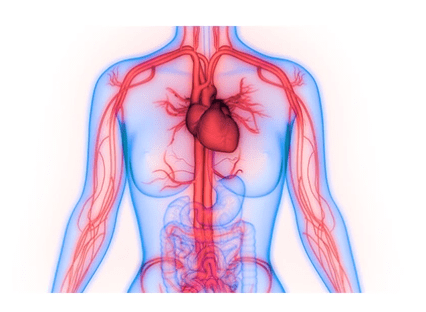
Heart Cath? Here is what to know.

Cardiac catheterization is a technique used by cardiologists to check how well your heart is performing. It can also be used to identify problems and administer a treatment for narrowed or blocked coronary arteries.
A cardiac catheterization (also known as a "cardiac cath" or "heart cath") is a technique that monitors blood pressure and flow in and around the heart. It can also be used to treat a variety of cardiac problems.
Let’s discuss what this procedure entails and how you’ll prepare for and recover from it.
Your doctor may conduct the following during a cardiac catheterization:
Check the pressure in your heart's four chambers.
Examine the chambers of your heart as they contract.
Obtain blood samples to determine the oxygen levels in each compartment.
Look for problems with your heart's valves or chambers.
A tiny sample of cardiac tissue is biopsied.
In a hospital's cardiac catheterization (cath) lab, a specially trained doctor and a team of nurses and technicians execute cardiac catheterizations.
A nurse will insert an IV line into your arm to give a sedative when it's time for the operation. During the process, you will be comfortable yet aware and able to follow directions.
The region where the catheter will be put (typically the wrist, groin, or neck) will be cleaned and shaved, and a local anesthetic will be used to numb the area.
A tiny tube called a sheath will be inserted into a vein or artery by your doctor. The sheath will next be used to gently guide an even smaller tube called a catheter into the blood artery. The position of the catheter as it travels through the major blood arteries to the heart will be displayed on a television screen. Although you may feel pressure, you should not be in any discomfort.
The tip of the catheter can then be fitted with a number of devices. Your doctor can use these tools to:
- Measure the blood pressure in each of the heart's chambers as well as the blood arteries that link the heart to the rest of the body.
- Examine the insides of blood vessels.
- Blood samples should be taken from various regions of the heart.
- A tissue sample from inside your heart is biopsied.
The catheter may also be used to inject contrast dye into your heart, allowing your doctor to take X-rays of your valves, chambers, and coronary arteries. An angiography is the name for this procedure.
In certain cases, your doctor may treat a condition right away after completing these tests. Your doctor may conduct an angioplasty to treat a narrowed or blocked section of a coronary artery. An angioplasty is a procedure that utilizes a small balloon to force any blockages out of your artery and expand it to enhance blood flow. A mesh tube called a stent may also be inserted by the doctor to assist prop the artery open.
The catheter and sheath will be withdrawn at the end of the operation, and the location will be wrapped and treated to avoid infection.
What to know to prepare before the procedure:
The procedure itself takes around 30 minutes, but the preparation and recuperation period add up to several hours. You should expect to stay at the hospital for the entire day, and make arrangements for someone to drive you home following the surgery.
You'll be told what you can and can't eat and drink in the 24 hours leading up to your cardiac catheterization. You'll usually be told not to eat or drink anything for six to eight hours before the procedure.
Any drugs you're taking, including over-the-counter vitamins and supplements, will be discussed with your doctor. They may tell you not to take them before your cardiac catheterization, but don't stop taking them until you're told to. A nurse will inquire whether you have any allergies on the day of the operation, notably to iodine, latex or rubber items, or specific drugs.
Wear your hearing aid throughout the operation if you normally do. Bring your glasses if you wear them.
If the catheterization was done through the groin, you'll be sent to a recovery room and told to rest flat for a few hours. You'll be instructed to maintain the nearest leg straight if the catheter was put via your groin. You will be watched in the recovery area if the catheterization was performed from the wrist or neck, but you will be able to sit up. In the meanwhile, a nurse will keep an eye on your heart rate and blood pressure, as well as any symptoms of chest discomfort and swelling, as well as any pain or bleeding at the puncture site.
You'll be given written instructions on how to continue your treatment at home before you leave the hospital. It's critical that you carefully follow these directions, including taking any medications that may be recommended to you.
If you have a coronary artery angioplasty or stent placed, you will be admitted to the hospital for observation, usually for one night.
It's usual to have a minor bruise at the puncture site. Call your doctor straight away if you experience any of the following symptoms:
- The size of the bruise is increasing.
- At the puncture site, there is swelling or fluid.
- tingling or numbness at the puncture location
Most individuals may resume their usual activities the next day, however vigorous activity and carrying heavy items should be avoided for two weeks. If you have a therapy during your cardiac catheterization, you may require some more time. Your doctor will provide you the appropriate advice.
We are just a call or click away. To learn more, book an appointment online or over the phone with PeachState Advanced Cardiac & Endovascular. We have several locations in Georgia: Newnan, Atlanta, & Griffin.
You Might Also Enjoy...


Should I be worried about my numb feet?

Can leg cramps be a sign of something serious?

Meet Dr. Odiete - PACE Cardiovascular Specilaist

Keeping your Vascular System Healthy


